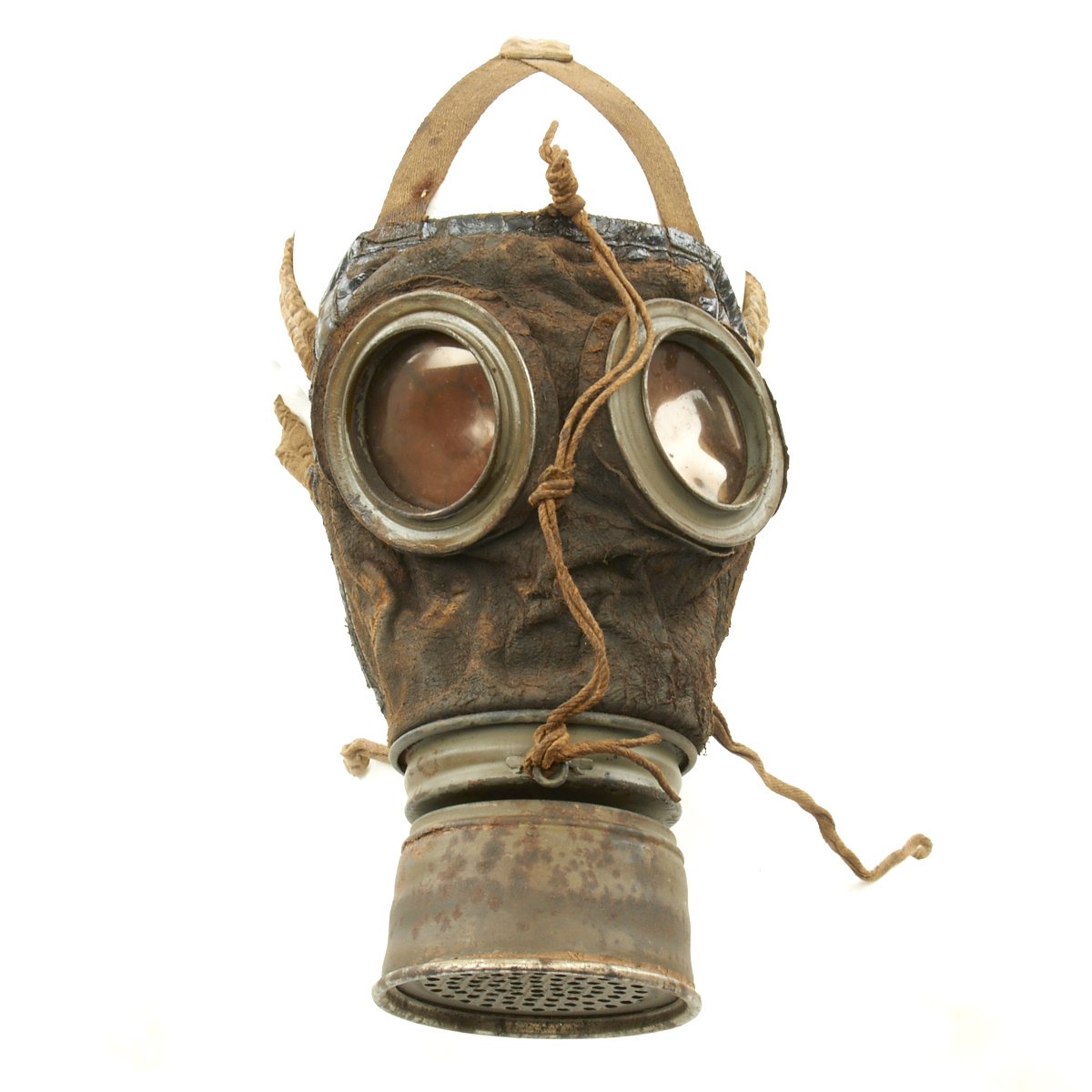


The holder was generally worn either attached to the belt below the rucksack at the rear, or on the right side / front by means of 2 belt loops made from the same material and fastened with zinc buttons. The mask has been so constructed so as to fit over the face of the heads supplied in the set, although slight alterations maybe needed at the end of the nose.Ĭanvas Gas Mask Holder / Segeltuchtasche für Gasmaske : In 1915 a canvas gas mask holder was issued with 2 dividing partitions within, which stowed the mask, filter and reserve-filter in a metal tin. 3, half head, enabling the wearing of a steel helmet – of cause most masks would have been worn in conjunction with the steel helmet.Ī light material strap was used to enable the mask to hang around the neck when not in use, whenever danger of gas was imminent – this can be made out of thin card supplied, paper or something similar and glued into the small indents each side (inside) of the mask. These are to be inserted to the inside of the masks before fixing to the face.ģ heads have been supplied with the mask: Head No. Filter and filter/fitting – grey-green.Īlso supplied are the 3 sets of computer cut eyepieces in 0.25 mm plexi glass. The outer seal (nearest to face) appears always darker. Colour: original masks differ in colour from light to dark leather. The position of the straps around the side and rear of head have been copied from a collector wearing an original mask, as few original photos exist where no headdress is worn.

The filter can after the excess resin / casting-canal are removed be screwed onto the mask just like on the original. The cord on the front of the mask could be shortened, lifting the filter, thus enabling a better vision for wearer – this was optional and left for the individual to decide. The first part of the straps were part rubberised (reinforced with wire) and part cloth. The protruding metal rings on the outside of the eyepieces protected the glass from scratches. These were set at an angle with a larger gap in between, avoiding earlier blind spots each side of the head.

Apart from the new cone appearance, the important difference over the previous mask was the position of the eyepieces. The fixed celluloid glass eye pieces were coated with gelatine on the inside to avoid misting up, which in turn was protected by a metal Spinne, or spider metal frame to also avoid scratching / smearing – these could be removed for cleaning etc. The mask incorporated only 3 seams in the material, an overall improvement from the M.15 mask reducing the risk of leakage. 15 ( Linienmaske), made out of sheep leather and impregnated with special gas proofing oils. 17 / Ledermaske (Gasmaske M.17): The replacement mask for the Gasmaske M.
WW1 GAS MASK EYE PIECES FULL
3 x Heads (Half, Full and with Field Cap M1910) / 3 Köpfe (halb, voll und mit Feldmütze).The 1940 model has been part of the museum collection since 1959 and was provided by the Faculty of Veterinary Medicine's Zootechnical Institute. The Utrecht University Museum's Veterinary Medicine Collection includes two equine gas masks produced during World War II: one from 1940 and one from 1944. This included a special equine gas mask, which was subsequently improved upon by other researchers around the world. The team developed guidelines and new protective equipment for military animals, especially horses, dogs and pigeons. Arie Klarenbeek (1888 - 1972) and a small team of fellow researchers at the Faculty of Veterinary Medicine conducted secret tests to find ways of protecting humans and animals from mustard gas. The aim was to protect both people and animals, feed, water and food from the weaponised gases. These efforts were based on a One Health approach. Experts, including veterinarians, were called in to help develop defensive tools and measures. In the wake of this gas war, military authorities - even in the 'neutral' Netherlands - started working to defend themselves against such weapons.


 0 kommentar(er)
0 kommentar(er)
